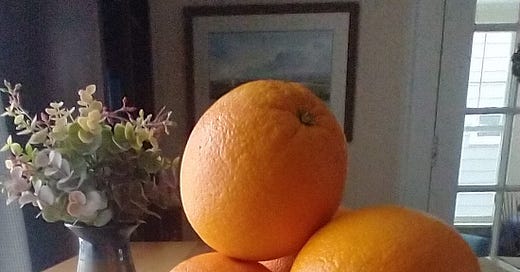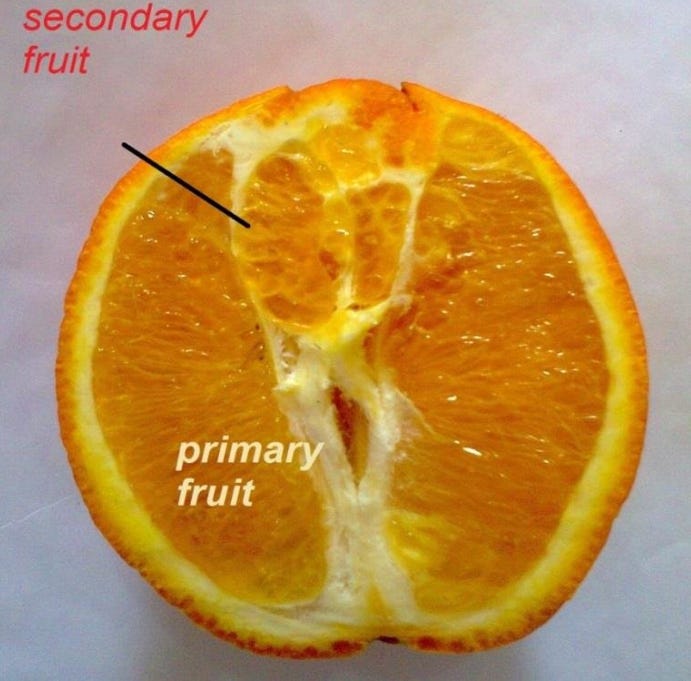Navel Oranges during their fleeting prime season are my favorite fruit.
Over the last few years, I haven’t seen them as much as I recall from the past. But this year, my supermarket had eight-pound bags of them on sale at a good price and when I got them home—they were prime!
Fun facts about navel oranges:
All navel oranges are descendants of a single tree. One theory traces them all to a single tree on the grounds of a monastery in Brazil in 1810-20. Another theory says the origin may have been in Portugal about that same time.
So, somehow, somewhere, a mutation occurred that resulted in a tree with an orange that formed two fruits. The secondary fruit that occurs at the apex of the orange (opposite the stem) causes the primary fruit to be seedless. It’s that secondary fruit that makes a navel orange look like it has, well, a navel.
Since the fruit is seedless, it has to be propagated by cutting and grafting.
Mutations still occur, so today there are (per Wikipedia) about 75 different varieties of navel orange. Still, they all have the same basic genetic makeup. They are considered to be clones—direct descendants of that one tree from Brazil (or maybe Portugal).
Cherries, peaches, cantaloupes, and pineapples are all high on my favored fruit list. But a fine navel orange in mid-January tops them all.
Anon.
Ridge





